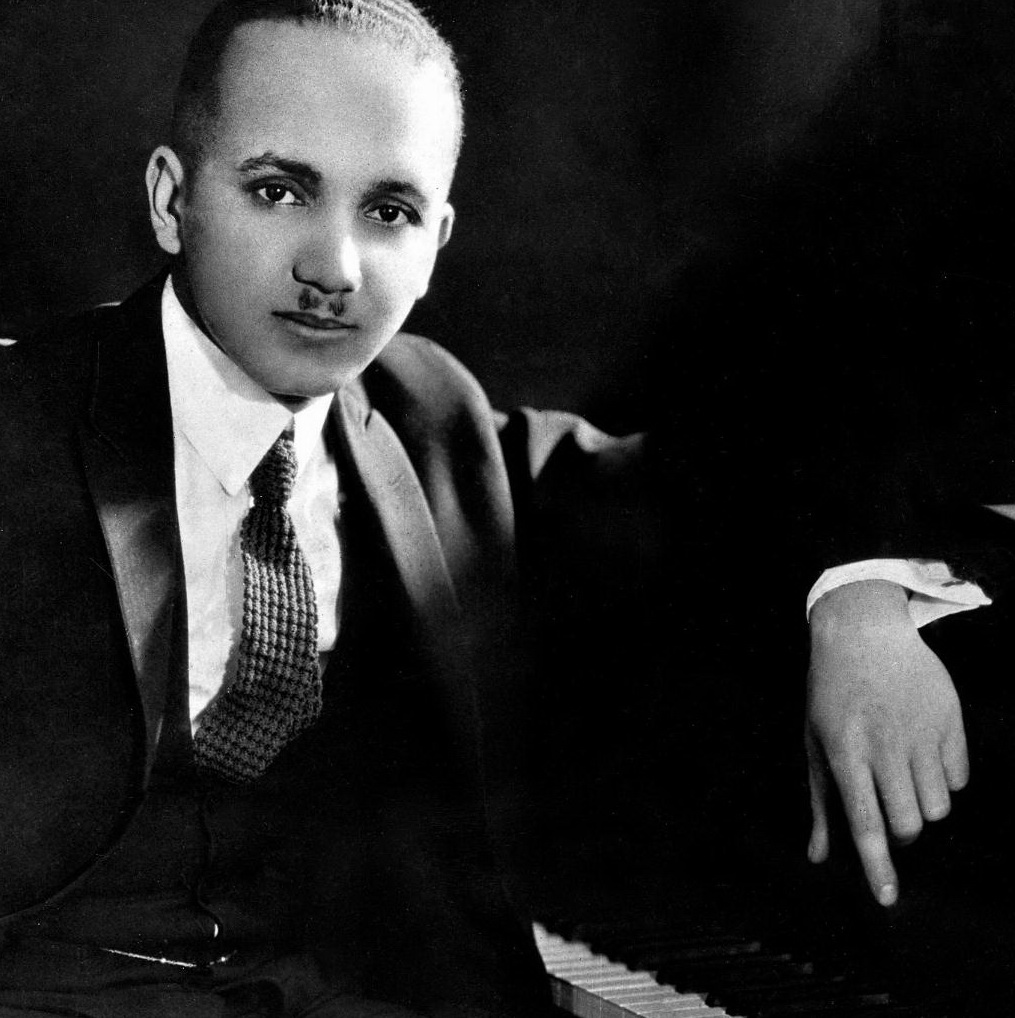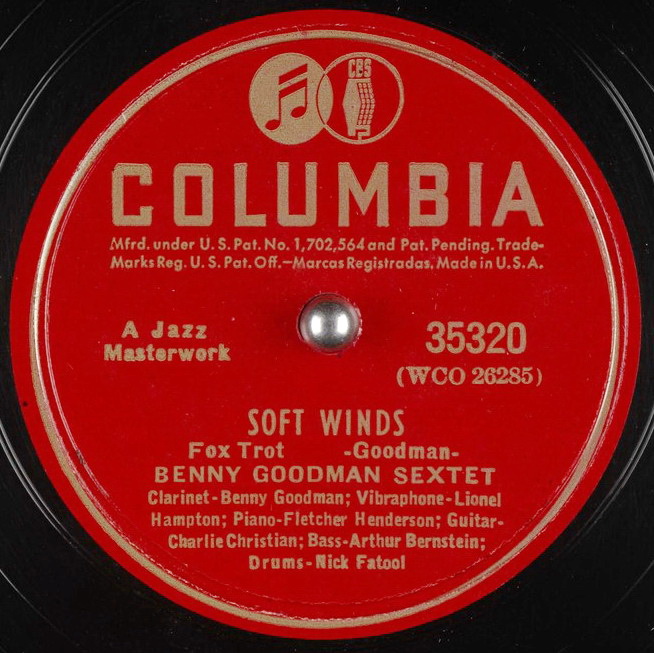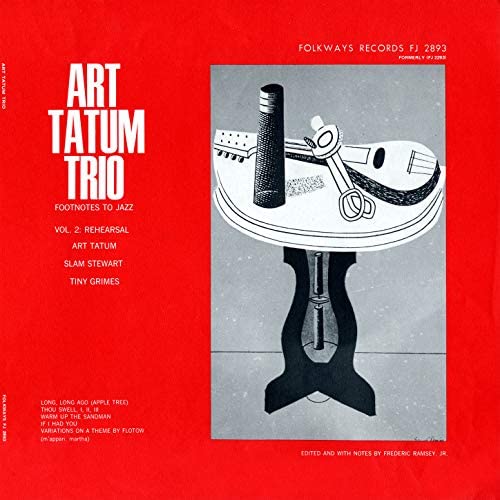Soft Winds – Fletcher Henderson
A small-group swing classic that's been recorded in a countless variety of settings and arrangements. We'll be exploring this important jazz standard in many ways. For now, take a listen to the original Benny Goodman version, pianist Art Tatum's trio (and his transcribed solo), and a 3-guitar interpretation (with Minus You audio).
- Recording: Benny Goodman - Benny Goodman Sextet
- Recorded on: November 22, 1939
- Label: Columbia (35320)
- Concert Key: A-flat
- Vocal Range: , to
- Style: Swing (medium)
- Clarinet - Benny Goodman
- Vibes - Lionel Hampton
- Guitar - Charlie Christian
- Piano - Fletcher Henderson
- Bass - Artie Bernstein
- Drums - Nick Fatool
Video
- Description
- Historical Notes
- Solos
- Piano Corner
- Bass Corner
- Drum Corner
- Guitar Corner
- Inside & Beyond
- Minus You
Our Concert Condensed Score reflects the arrangement of the original recording in the key of A♭. The guitar has the melody, with vibes and clarinet harmony notes above. Click on Guitar Corner for more details about the arrangement.
This recording has an intro based on the last two measures of the melody. There is also a coda that tags these last two measures. In this arrangement, the melody descends while the bass rises at the beginning of this two-measure phrase. The first two guitar chords in the intro may look like they clash with the bass notes, but their smoothly chromatic motion, coupled with the way they resolve to the tonic, really makes them work out.
These first studio recordings of Soft Winds come from Charlie Christian's second studio session with Benny Goodman's sextet.
Charlie continues playing the melody for the repeat of the head, also adding a three-note pickup to each phrase in unison with the clarinet (Benny Goodman). There is no guitar solo on this recording, but Charlie is featured prominently on the melody.
Related Songs
Email Send Soft Winds to a friend
- Recording: Art Tatum - Rehearsals, Vol. 2
- Recorded on: June 21, 1944
- Label: Folkways (FP33)
- Concert Key: A
- Vocal Range: , to
- Style: Swing (medium up)
- Piano - Art Tatum
- Guitar - Tiny Grimes
- Bass - Slam Stewart
Purchase Soft Winds - Fletcher Henderson
Purchasing this song through our affiliate links with certain retailers provides jazzleadsheets.com with additional support to help keep us bringing you the best lead sheets available. Thank you!
Video
- Description
- Historical Notes
- Solos
- Piano Corner
- Bass Corner
- Drum Corner
- Guitar Corner
- Inside & Beyond
- Minus You
The last four measures are played as an intro. There is a shout chorus after the solos. Click on Solos for more details about the piano transcription.
This version of Tatum's solo is available on YouTube
Click on the Solos tab for more info.
Our five-page melody and solo transcription includes the in head and Art Tatum's two-chorus solo. Tatum states the melody quite simply in three-note voicings, with slinky left-hand fills between the melody phrases. The solo CLIP, as is often the case with Art Tatum, is a virtuosic showcase that all but requires several listenings to fully comprehend. It's basically a right-hand solo, with only a few left-hand interjections besides a couple of sixteenth-note runs with a two-handed range. The dazzling, cascading sixteenth-note and triplet lines are broken up with calmer eighth-note passages that showcase Tatum's bouncy swing feel. Fingerings are shown for many of the faster lines. An advanced yet worthwhile solo to tackle.
Related Songs
Email Send Soft Winds to a friend
- Recording: Jeanfrançois Prins - Three Guitars Playing
- Recorded on: April 4, 2008
- Label: jazzleadsheets.com (JLS 1047)
- Concert Key: F
- Vocal Range: , to
- Style: Swing (medium)
- Guitars - Ben Cassorla and Jeanfrançois Prins
Video
- Description
- Historical Notes
- Solos
- Piano Corner
- Bass Corner
- Drum Corner
- Guitar Corner
- Inside & Beyond
- Minus You
If you are an inexperienced guitarist, see the Guitar Corner tab for more tips.
Don Sickler: Recording these easy 3-Guitar arrangements gave me a chance to get guitarists Jeanfrançois Prins and Ben Cassorla out to the Rudy Van Gelder Studio to record them. One recorded two of the tracks and the other one the third. I know they recorded Guitar 1 and Guitar 3 together first (in separate isolation booths). Then one of them added the 2nd part.
The third part is always present; you can remove Guitar 1 clip or Guitar 2 clip. Learn guitar 3 by playing along with it.
Suggestions for the inexperienced Guitarist: The easiest way for you to get started would be to explore the Guitar 2 part and MP3 no guitar 2 track. First you want to make sure you have the notes together on the guitar, so just be able to play the part note after note, not worrying about the rhythms until you've got the notes together.
Once you have the notes on the guitar, just put on the MP3 track and go for it! Listen carefully to Guitar 1, making sure you are phrasing with him as you play Guitar 2.
Once Guitar 2 is comfortable for you, check out Guitar 1, where you are playing the melody. Try the same procedure, using the MP3 no Guitar 2.
When Guitar 1 is comfortable, get Guitar 3 together in the same way. There is no minus Guitar 3 track. You need Guitar 3 (the bass part) to start the arrangement, and hold the other 2 parts together. Once you've learned the Guitar 3 part, play it along with Guitar 3 using the Complete Mix track.
Related Songs
Email Send Soft Winds to a friend

Fletcher Henderson
December 18, 1897 – December 29, 1952
Jazz historians often name Fletcher Henderson as one of the fathers of swing. Fletcher's band included nearly all of the greatest swing artists. Today he is credited not only with writing arrangements that helped pioneer swing and jazz forms but also discovering many of the best musicians of the swing era, including Louis Armstrong and Lester Young. Read more...



